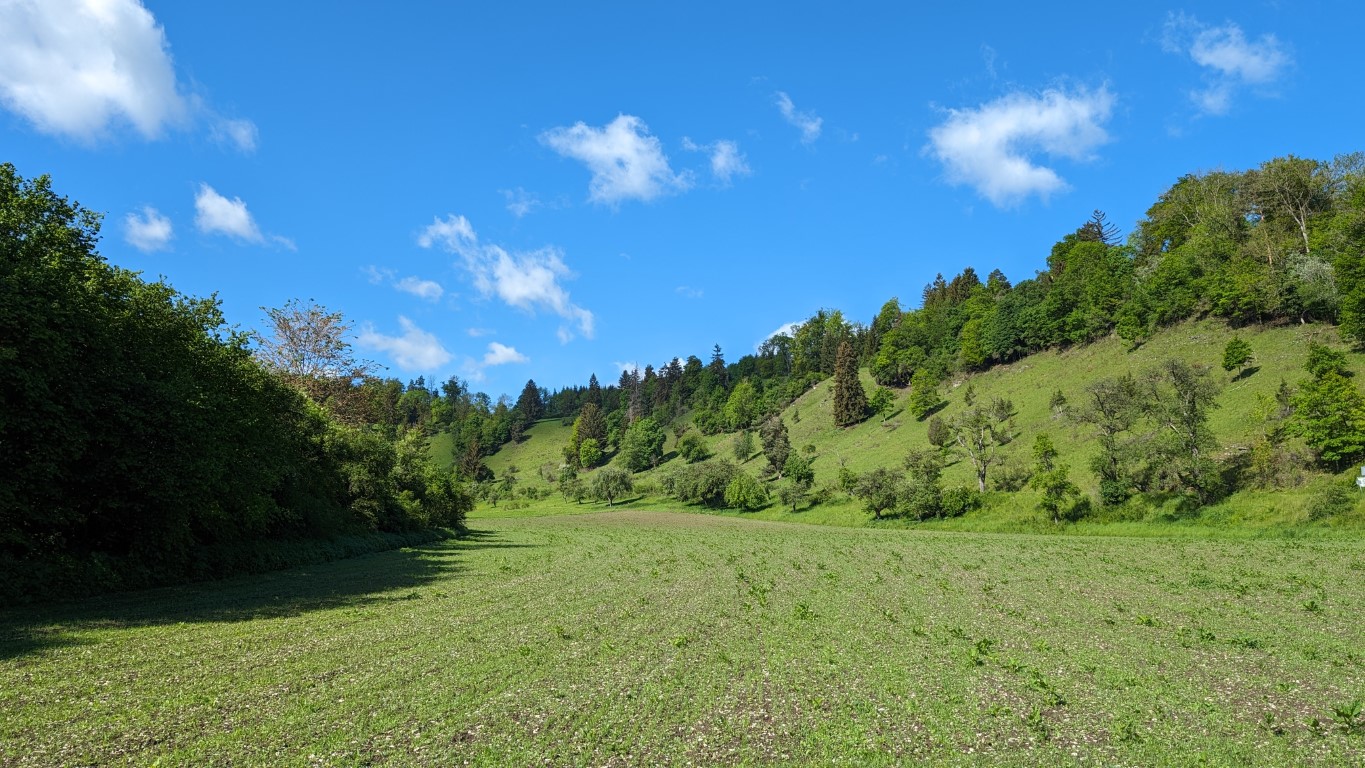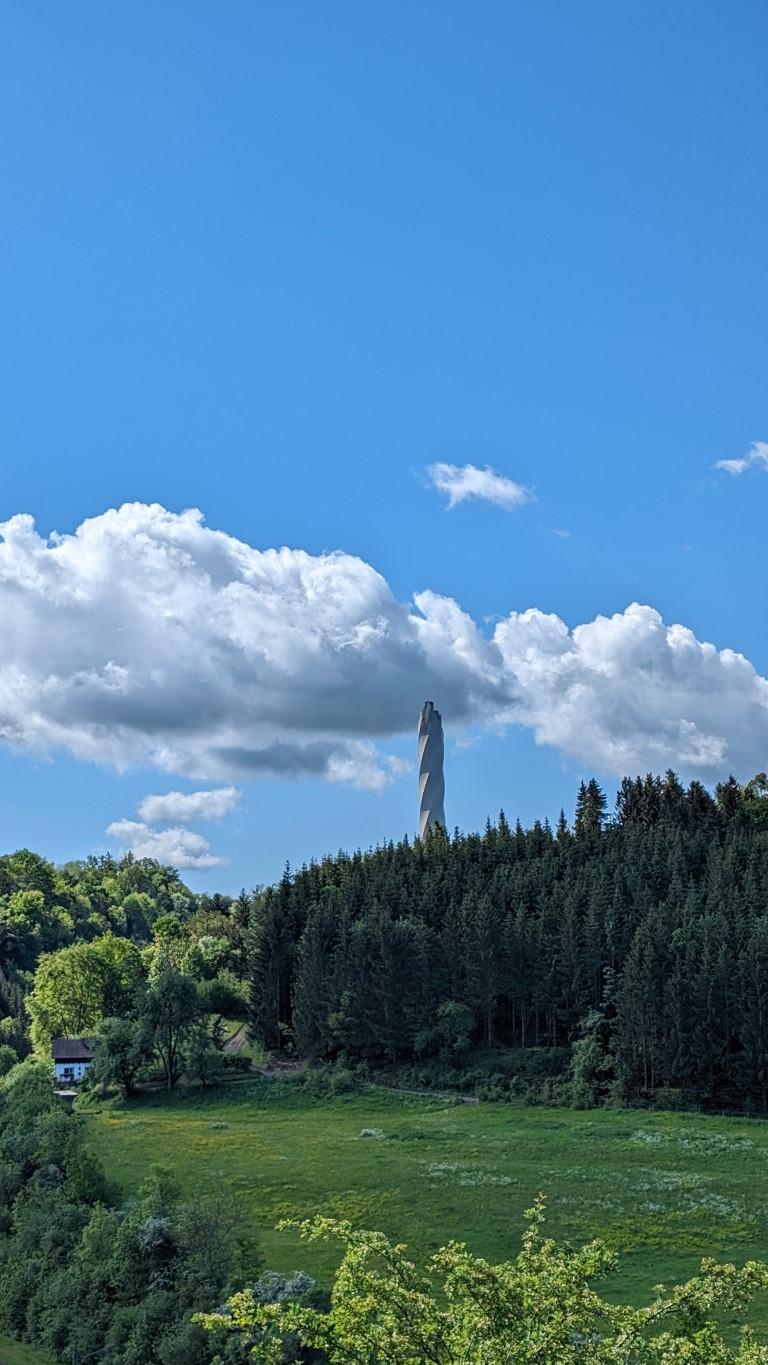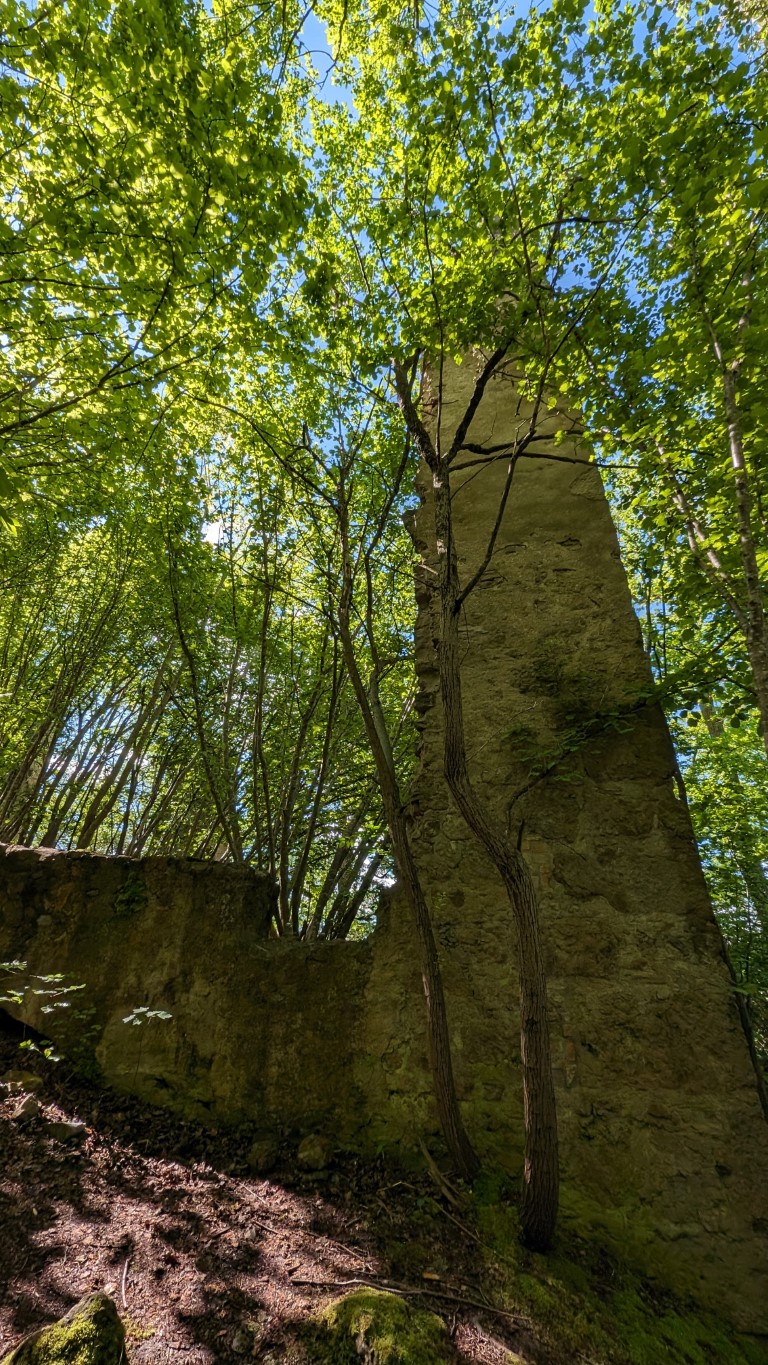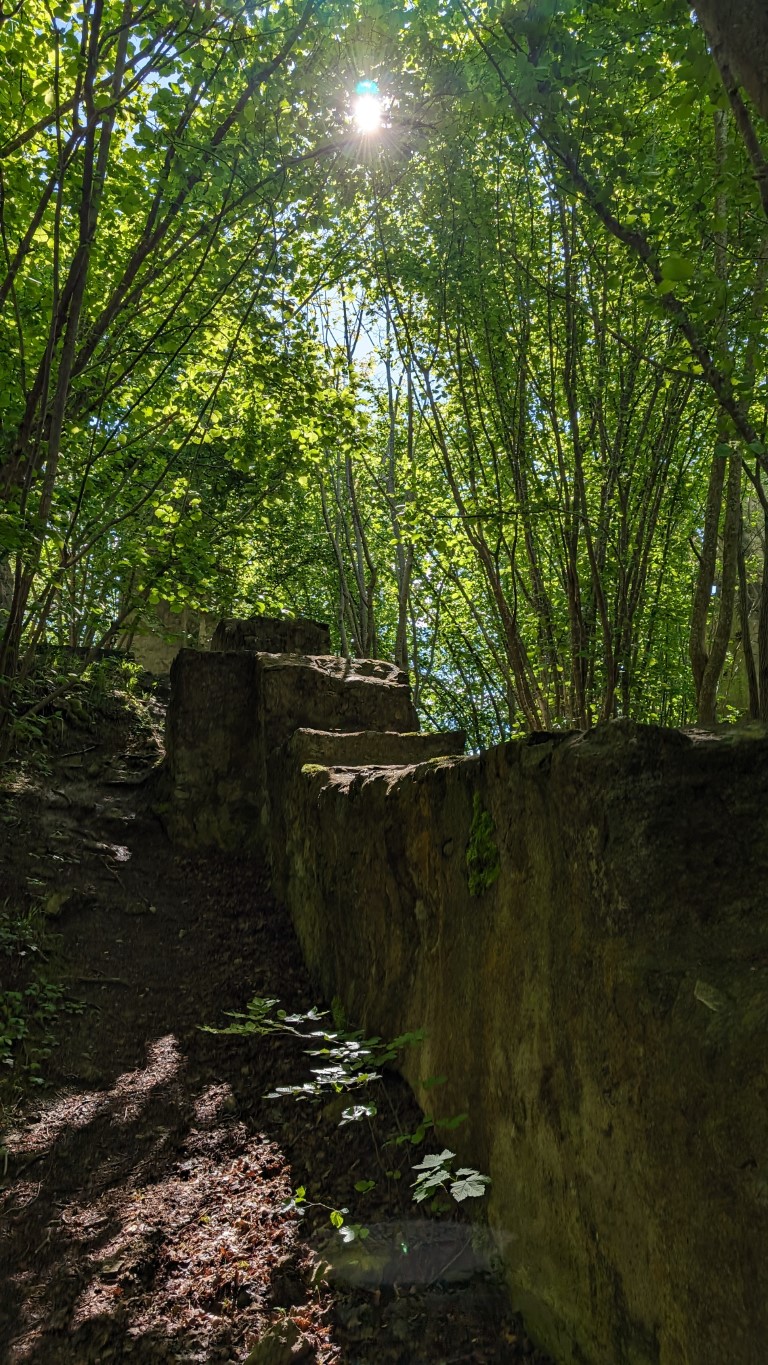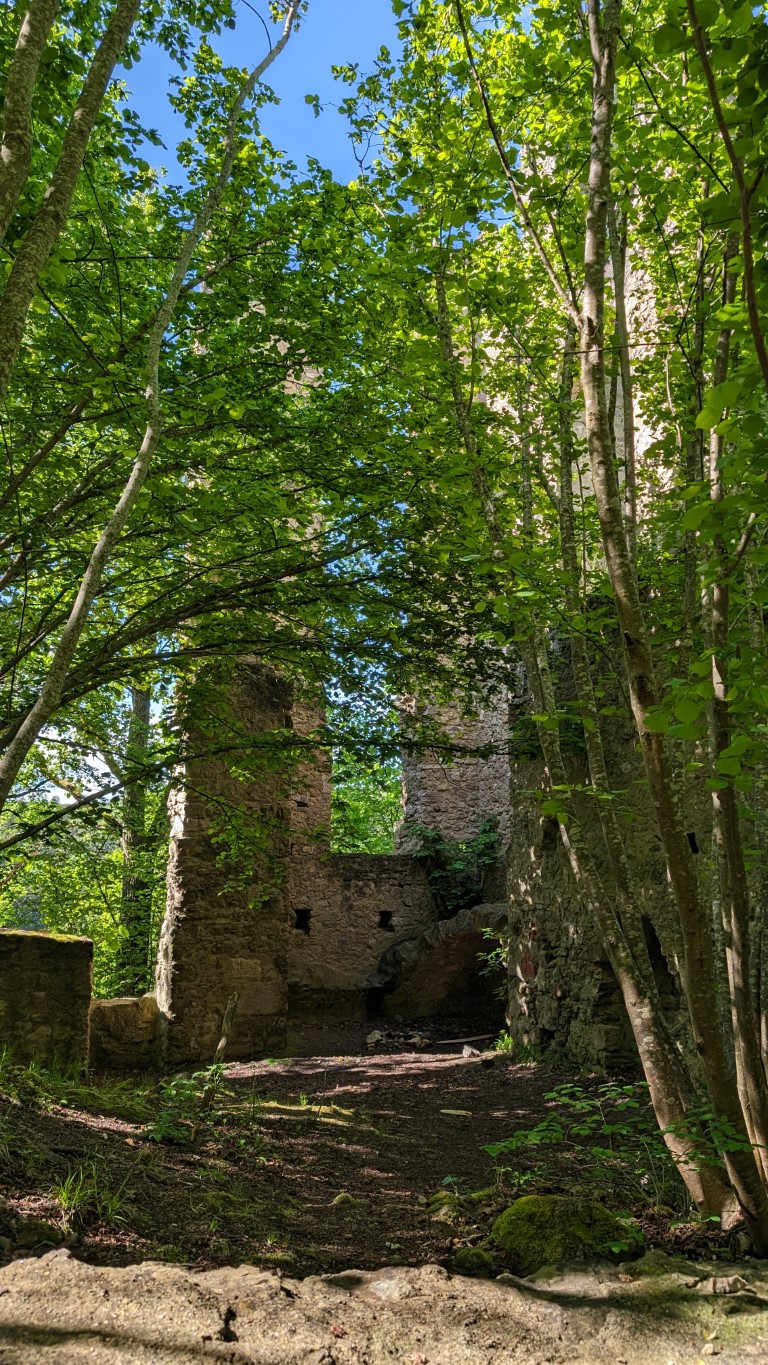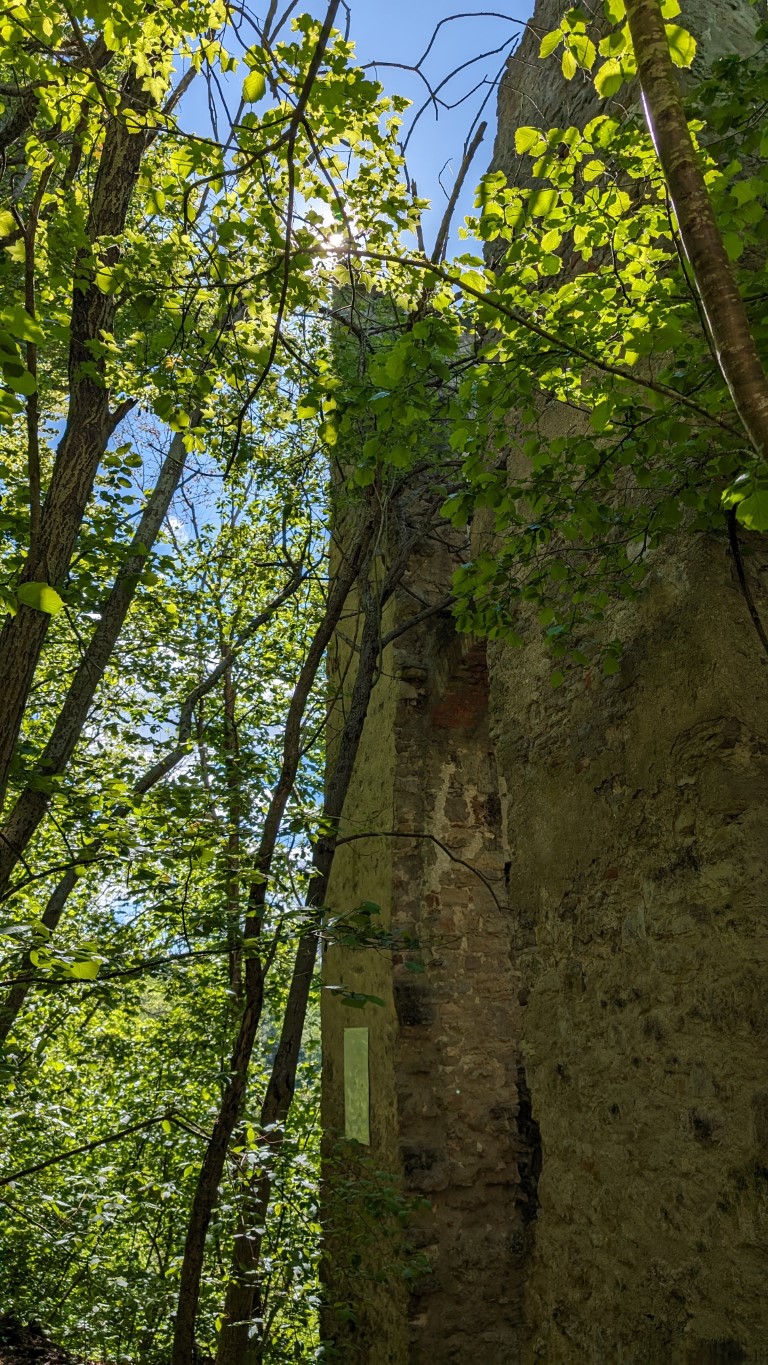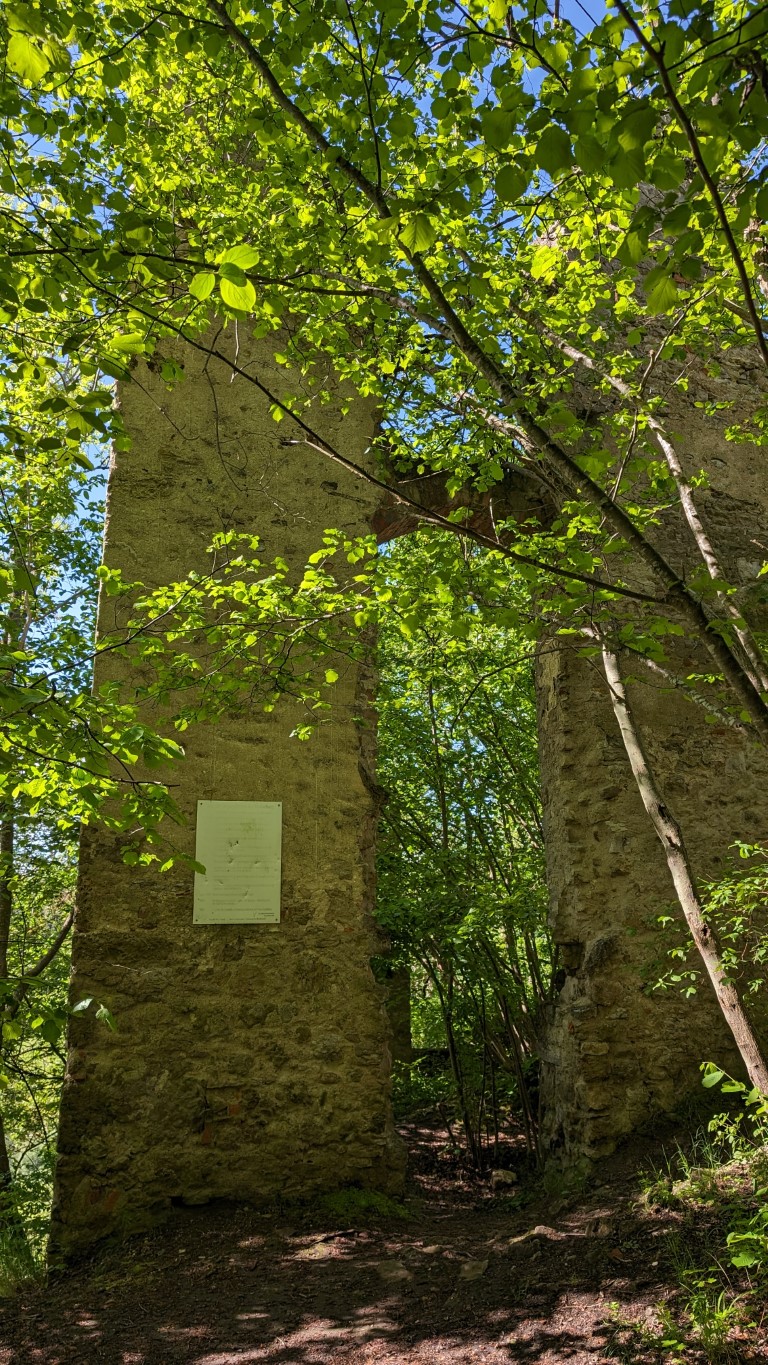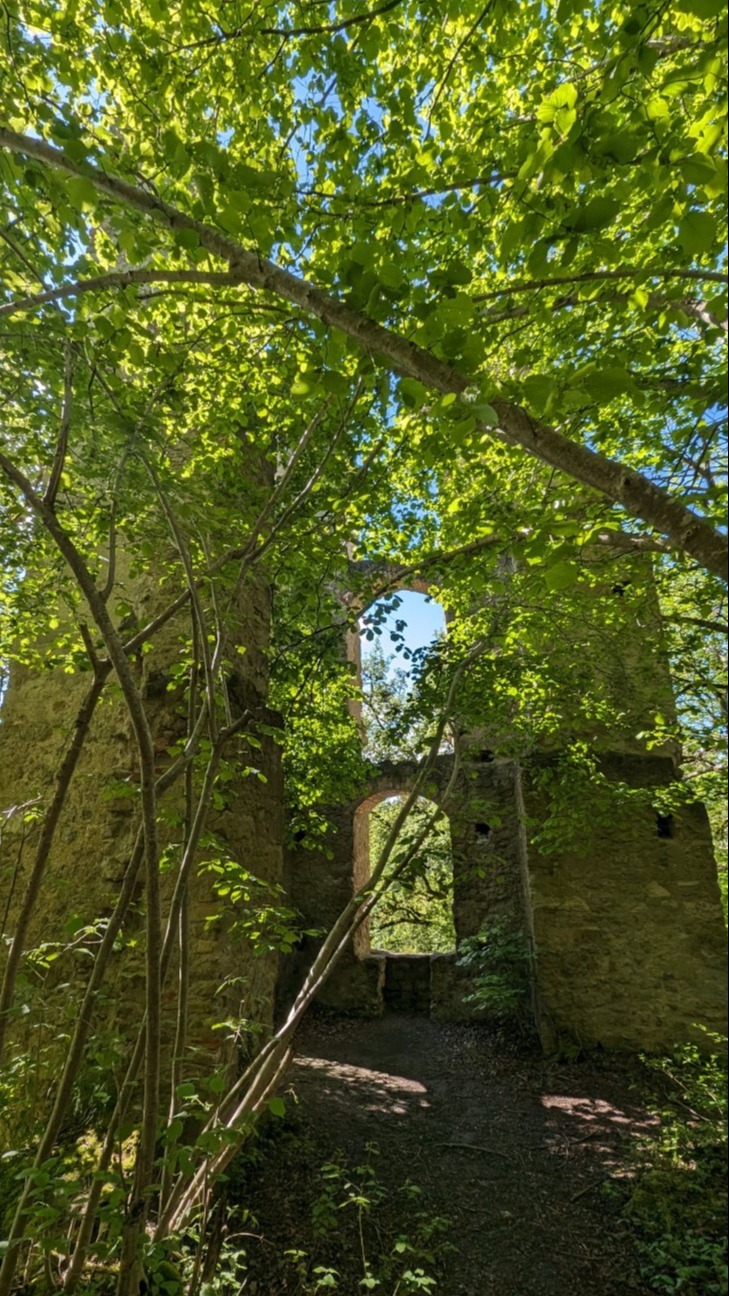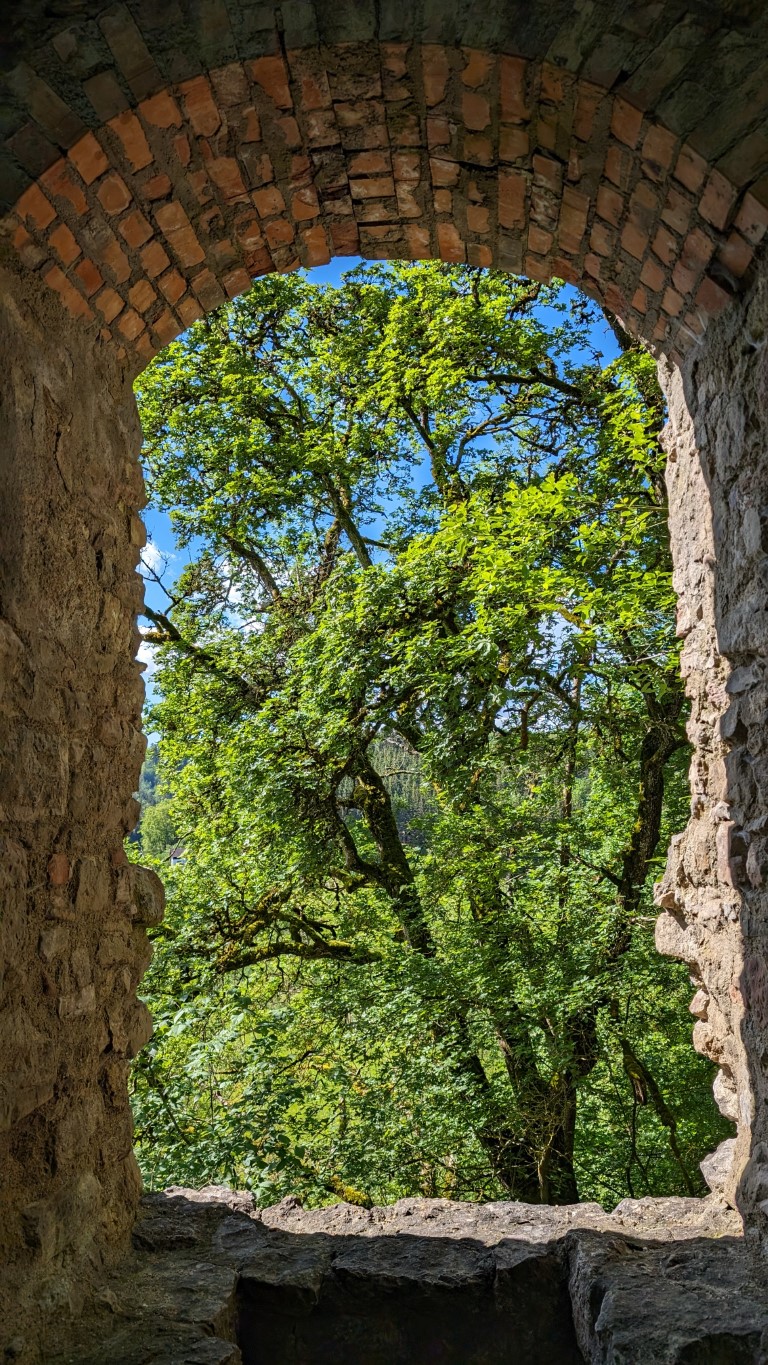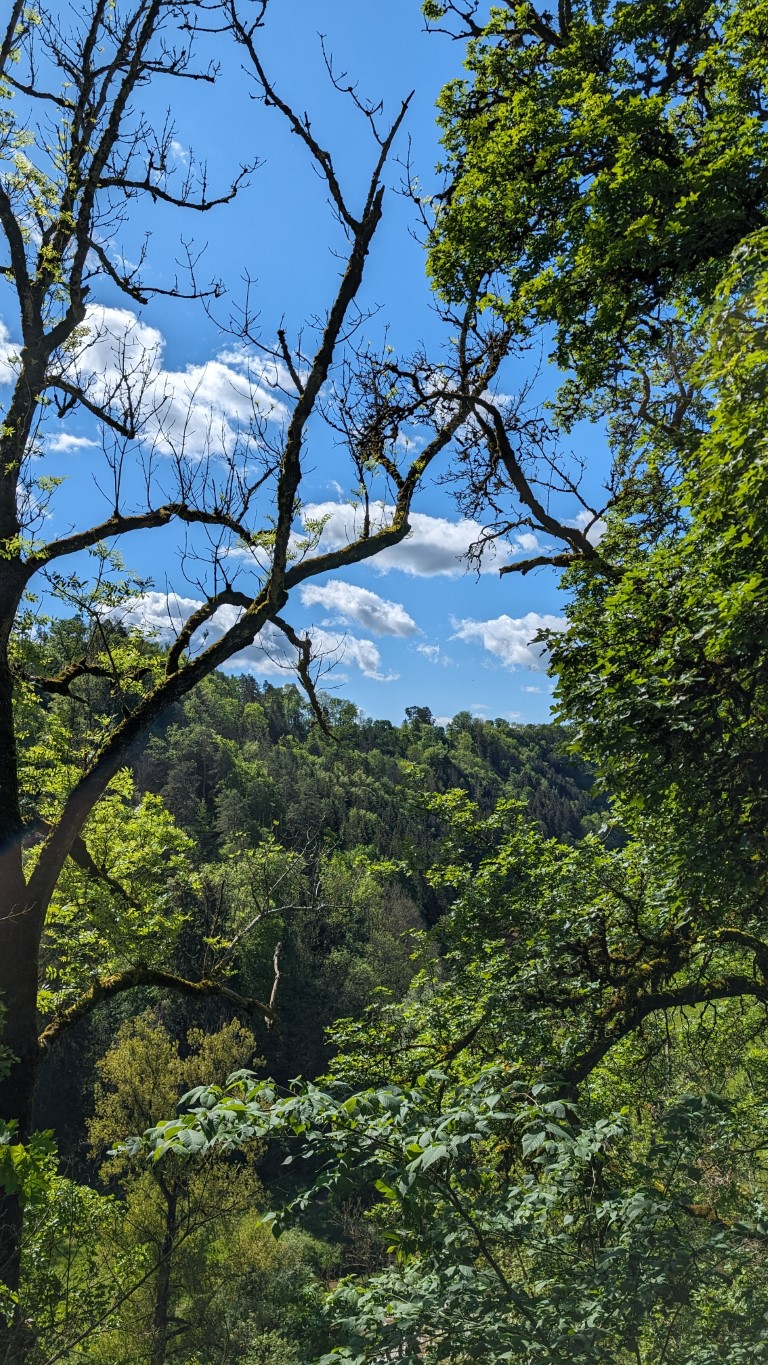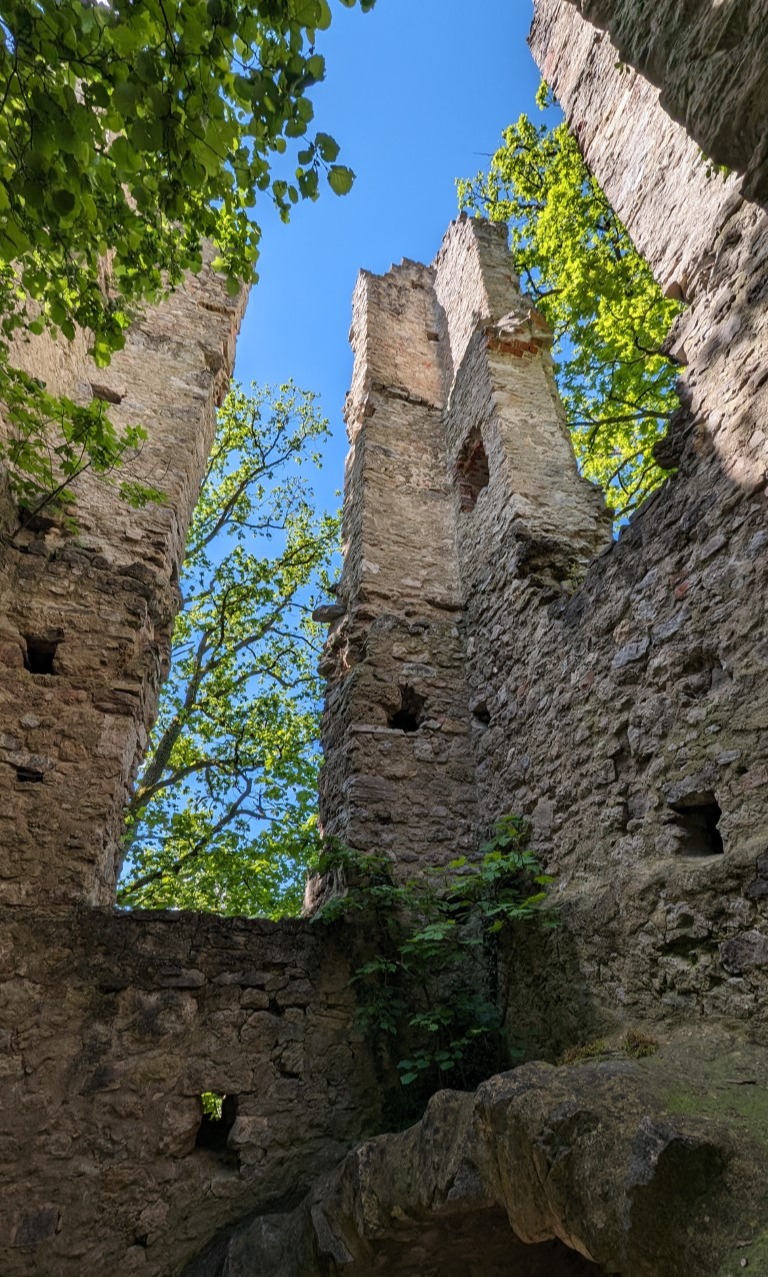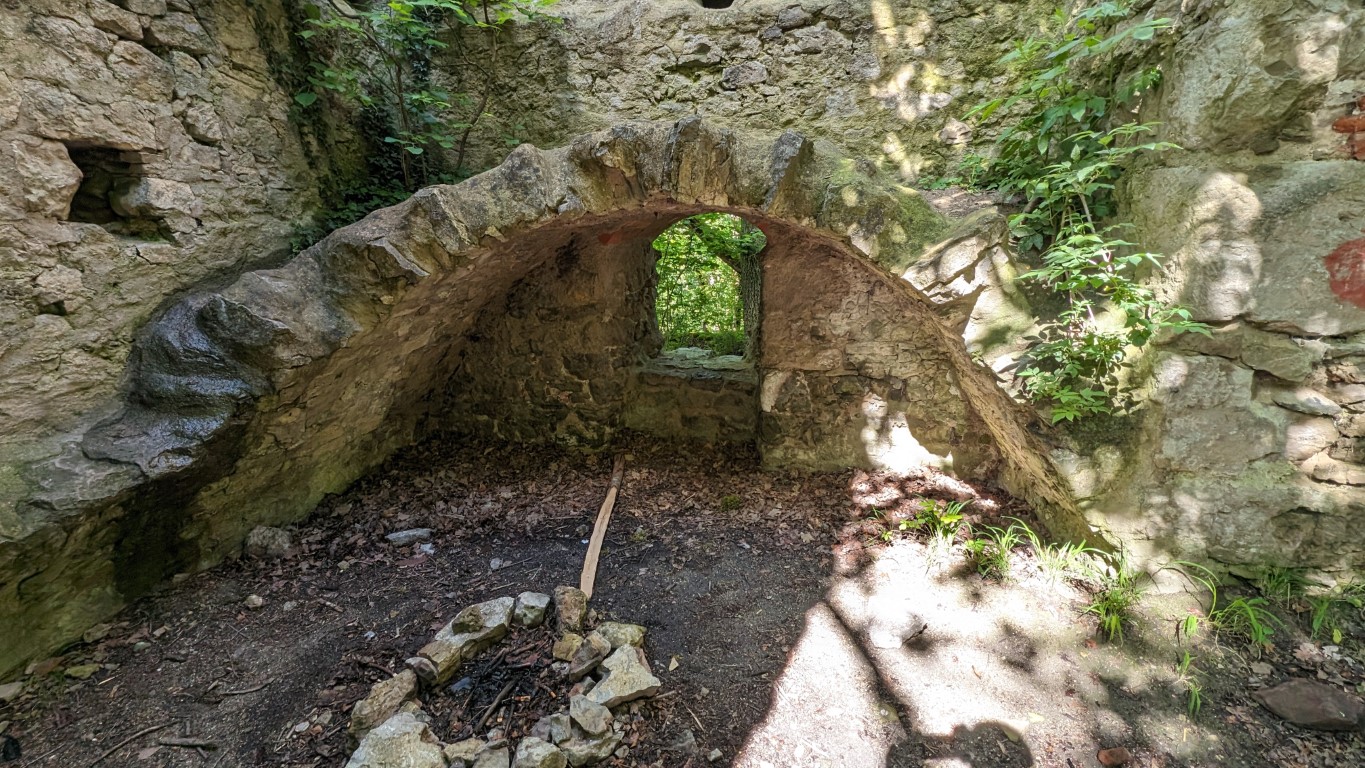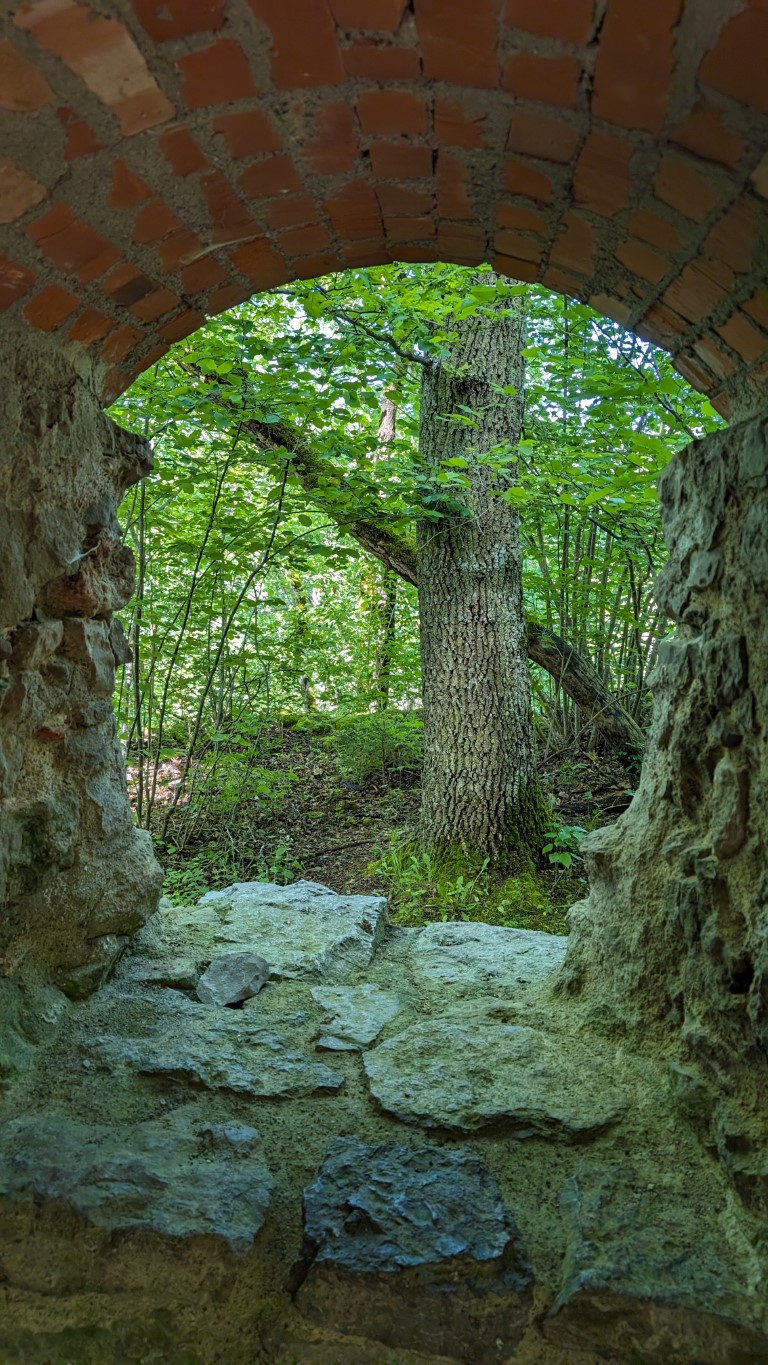The Neckarburg, an ancient fortress from the early Middle Ages, stands proudly on a majestic hill near Villingendorf, nestled in the picturesque town of Rottweil in the Rottweil district of Baden-Württemberg. This venerable ruin, owned by the noble Count of Bissingen and Nippenburg, is the oldest castle complex in the region and hides stories of times long past within its weathered walls.
The castle area itself is a natural jewel, embedded in the Neckarburg nature reserve. Here the landscape unfolds in a spectacular panorama: the magical "Bergle" rises, a hill that was once surrounded by the waters of the Neckar and now rests in the dry bed of the river, covered in silvery juniper.
This little piece of land is a silent witness to the forces of nature and human history. The scent of the juniper mingles with the breath of bygone eras, while the castle defiantly resists the elements over the centuries. Here, time seems to stand still, and yet every stone, every moss and every gust of wind tells of the unstoppable flow of history that has shaped these walls and landscape.
The Neckarburg and its surrounding paradise are not only a testament to past architecture, but also a sensual experience for every visitor who allows themselves to be carried away by the magical atmosphere of this place. A visit is a journey into the past, an immersion in the natural beauty and an encounter with the mystery that surrounds this ancient castle.
background
The Neckarburg was first mentioned in 793 as "Nehhepurc", when the Alemannic Count Berthold donated it to the monastery of St. Gallen and received it back as a fief. Originally probably built as a refuge for the Alemannic nobles Bertholden or Alaholfinger, no structural remains from this period have survived. However, parts of the moat and the fortifications are still visible.
In the 11th century, the Neckarburg was mentioned again in written sources, now owned by noble families. From 1279, it belonged to the Counts of Sulz and in the 14th century it was divided into two parts: the front castle, owned by the Lords of Neuneck, and the rear castle, inhabited by the Lords of Reute. In 1379, the castle was badly damaged in a dispute and later described as an uninhabitable castle. In 1580, the Spreter von Kreudenstein family acquired the castle, expanded the front castle into a palace and built a new three-tower castle elsewhere.
During the Thirty Years' War, the castle fell into disrepair. In the 18th century, it came into the possession of the St. Georgen monastery, which renovated it. In 1836, the Counts of Bissingen-Nippenburg bought the ruins. The chapel contains baroque chair frames, an early Gothic Madonna and gravestones from the 13th century. In the 1980s, the ruins were renovated by the Rottweil City Youth Association. Today, the castle's surrounding walls are still preserved.
The cold heart
Peter Munk, the coal-burner, had had enough of being a poor charcoal burner. He longed for the wealth and prestige that the fat raftsman Ezechiel had. He was convinced that he would then find happiness.
There was a legend about the little glass man, the "Treasure Houser," who had made many people rich. Peter went into the forest and actually found the little glass man, who wanted to grant him three wishes. But he warned him not to make any foolish wishes. Peter, however, only wished for money. The little glass man granted his wish, but left him angrily because Peter had forgotten to wish for intelligence as well.
So Peter Munk became rich, but soon lost all his money gambling and was on the verge of ruin. Then he remembered the other man who had often offered his services: the sinister raftsman Dutchman Michel. Peter made a pact with him. He would have money and prestige for life, but in return he had to give up his living, beating heart. Peter agreed, because his warm heart had already caused him a lot of suffering. Instead he received a heart of stone.
From that point on, Peter Munk lacked nothing. He married the most beautiful girl in the area. But he could not love her, and joy was also foreign to him. He rejected his mother, who lived in poverty, and finally he even killed his wife because she had given food to an old, hungry man.
But then something like remorse stirred in him, as far as his heart of stone could manage. He set out to find the little glass man again. The old man his wife had helped was none other than the little glass man. Out of compassion for her kindness, the man from Schatzhaus agreed to help Peter. With a ruse, Peter managed to get his heart back, which was still beating. His warm feelings also brought his wife back to life. And so Peter Munk lived happily for a long time, modestly and highly respected as a charcoal burner.
Access
The castle is accessible via a path from the beer garden of the nearby restaurant.



